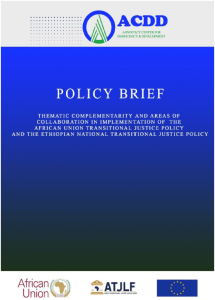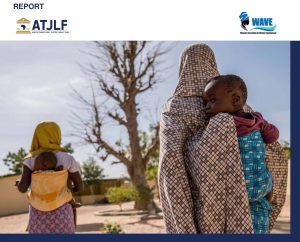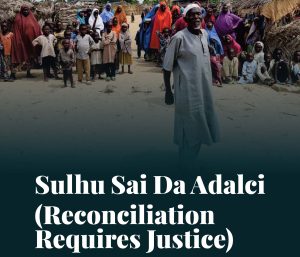ATJLF was birth to bring African solutions to the African challenge of protracted conflict and mass violation of human rights on the continent. Till date, ATJLF has invested over 5 million dollars in grants to 46 organizations, touching thousands of lives with post-conflict support to see that vision become a reality. HumAngle has fulfilled ATJLF’s vision in many ways than one. At its founding in 2020, the founder, Ahmad Salkida, was driven by a desire to show the human aspect of violence and armed conflict in Nigeria’s Northeast – a vision that has now extended beyond Nigeria’s Northeast..
In those early days, HumAngle found a steadfast partner in the Africa Transitional Justice Legacy Fund (ATJLF) as ATJLF was one of HumAngle first funders, and from 2020 to 2022, we provided the resources to pursue this critical work. In the past one year, HumAngle has also been working with current grantees of ATJLF to showcase the impact of their transitional justice interventions across the continent.
As ATJLF prepares to sunset in December 2026, this guide stands as a testament to an enduring legacy. It is thoughtfully structured to equip journalists with practical tools for transitional justice reporting. It begins with an introduction to transitional justice. It then focuses on the specifics of transitional justice reporting: trauma-aware interview techniques, understanding local contexts, collaborating with civil society organizations, and managing community expectations. It also highlights sub-issues like criminal justice administration and welfare in displacement camps, offering reporters clear focus areas. The transitional justice stories section of the manual also highlights and a list of organizations working in this space – many of whom are ATJLF grantees.
This guide is important because of the important role that the media plays in peacebuilding. Journalists give voice to the voiceless, hold leaders accountable, and curate stories that help communities heal, reconcile, and rebuild. This guide empowers newsrooms to do that work ethically and effectively, ensuring that the complexities of transitional justice are covered with integrity and care.
We hope that this guide inspires African newsrooms to become champions of truth, justice, and reconciliation.
In those early days, HumAngle found a steadfast partner in the Africa Transitional Justice Legacy Fund (ATJLF) as ATJLF was one of HumAngle first funders, and from 2020 to 2022, we provided the resources to pursue this critical work. In the past one year, HumAngle has also been working with current grantees of ATJLF to showcase the impact of their transitional justice interventions across the continent.
As ATJLF prepares to sunset in December 2026, this guide stands as a testament to an enduring legacy. It is thoughtfully structured to equip journalists with practical tools for transitional justice reporting. It begins with an introduction to transitional justice. It then focuses on the specifics of transitional justice reporting: trauma-aware interview techniques, understanding local contexts, collaborating with civil society organizations, and managing community expectations. It also highlights sub-issues like criminal justice administration and welfare in displacement camps, offering reporters clear focus areas. The transitional justice stories section of the manual also highlights and a list of organizations working in this space – many of whom are ATJLF grantees.
This guide is important because of the important role that the media plays in peacebuilding. Journalists give voice to the voiceless, hold leaders accountable, and curate stories that help communities heal, reconcile, and rebuild. This guide empowers newsrooms to do that work ethically and effectively, ensuring that the complexities of transitional justice are covered with integrity and care.
We hope that this guide inspires African newsrooms to become champions of truth, justice, and reconciliation.
No Url Found



